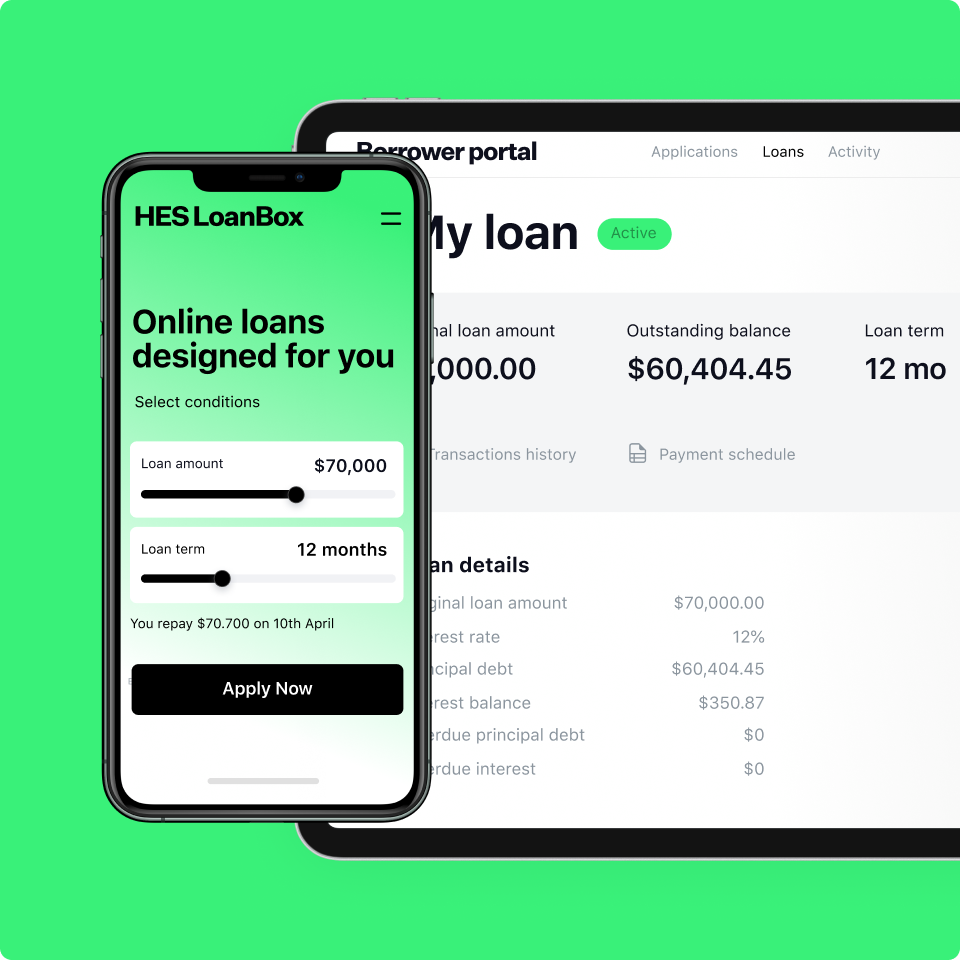The lending market is changing faster than ever before. It’s estimated that this year, the alternative lending sector will reach a value of US$8,219.00m. By 2027, that number could be as large as US$8,514.00m, showing that lending is not only evolving but that non-traditional lending providers are proving serious competition. But why is this, and what can both traditional and alternative lenders learn from the latest market trends? To understand this, let’s take a look at the common banking problems and solutions in the lending industry today.
Common banking problems and solutions today
Finance has always been a fast-moving sector, and with the advent of technology, such as banking loan software, all that seems to have accelerated. While progress has been swift, it has left finance leaders with some challenges as well.
Keeping up with customer demands
Top 9 B2B Financing Types and How They Can Be Automated It’s no surprise that fintech has taken over with such zeal, with the sector set to hit a value of $213 billion by 2024. Today’s consumers are more concerned with the speed of service and time than ever before. According to research, 40% of banking consumers are willing to leave their current provider if they are receiving a better digital service elsewhere. But what is a ‘better digital service.’ For the modern consumer, this is an experience that is faster, more efficient, and more interactive. Unfortunately, such demands have left traditional providers in the dust.
Both traditional providers and fintech are constantly on the lookout for innovative commercial loan servicing software that can quickly answer the needs of their consumers to keep up with speed and deliver a top-of-the-range service.
For example, the drop-off rate in the lending process can be quite significant. However, by using smart loan origination software, among others, financial businesses can start to develop a relationship with their clients from the very beginning by building an interactive, effective loan process from start to finish.
Meeting regulatory requirements
No doubt, the financial industry is one of the most regulated out there. That applies to both fintech, which tries to win consumer confidence, and traditional lenders, which strive to modernize. Regulators aim to help create a fairer industry for all. However, such strict regulations are not always conducive to growth or developing customer-friendly experiences.
This is why many companies developing loan management system for lenders pay close attention to how their software interacts with current regulatory rules. For example, HES LoanBox offers top-level software while keeping in mind all regulatory requirements. In doing so, the solution offers a competitive position in the market.
However, not all lending software providers are considered equal, and this creates an extra layer of confusion for lending providers as they struggle to find an adaptable solution that works for their needs while meeting the regulators as well.
Offering omnichannel services seamlessly
Fintech Application Development: Your Step-by-Step Guide One size does not fit all when it comes to your banking clients. More so now than ever, they expect and demand a more personalized banking service — 72% say it is highly important. However, when it comes to something as intricate as financial management, this can become relatively tricky. After all, offering bespoke service to thousands (if not millions) of clients is almost impossible.
Although this is true to a degree, services cannot be 100% personalized at this stage, creating a somewhat personalized experience to give that ‘home-bank’ feel is possible. For example, this can be as simple as recognizing a person’s name to delivering personalized rates to a comprehensive omnichannel experience across all channels.
For example, say your client contacts your bank via Facebook chat. You can track this ticket across their accounts and ensure consistent communication, even if they connect with you via WhatsApp later. And this isn’t just for huge companies anymore. Even SMEs can create this with small business lending software.
Psss… Wanna start lending within 45 days?
Improving transparency in the financial sector
The financial sector has somewhat of a reputation for being complicated, gated, and somewhat opaque. While new fintech has set about trying to modernize the image of the sector being uptight and stuffy, across the board, there is a move toward greater transparency in the field.
Smart software and AI tools, such as loan management systems, allow providers to develop a more open and transparent relationship with potential lenders. By laying the process out step by step and creating a more transparent lending system, providers can build trust and increase client satisfaction with the service and product being provided. In turn, this leads to increased loans and increased successful loans at that.
Managing data better
Why Do Lenders Prefer Software to Excel Loans Spreadsheets? With 2.5 quintillion bytes of data produced every day, it’s no surprise that the lending industry is doing its best to harness that data to improve the customer experience and boost business. Managing data correctly is one way of doing that, and this starts from the very bringing of the client’s journey.
For example, modern commercial lending servicing software solutions need to track and manage data from the moment a client begins their interaction, if not before. By harnessing and utilizing this vast expanse of data smartly, a provider can gain valuable insights into their clients.
This could dictate how future services are provided, for example, more loans, lower interest rates, or even how risky a particular client could be to the business — how likely are they to repay their loan, etc. Although data is almost endless, nowadays, the need to manage it is becoming critical for businesses of all types, including (and especially) finance.
Lowers the amount of paperwork
Digital Signature in Banking: Points for Financial Organizations to Consider Undoubtedly, bureaucracy is part and parcel of the banking sector, considering AML, KYC, and other requirements. However, this can be tedious both for the client and for the service provider due to data management and the physical need to store paper.
Luckily, many of these processes can be completed without the need for extra paperwork due to new online AML/KYC procedures that can verify the identity from behind a screen with a digital record stored for accuracy. Not only does this provide a smoother journey for the client, but it’s environmentally friendly too.
Are you satisfied with your loan servicing software?
Which commercial loan servicing software solutions really work?
For many decision-makers in the lending business, commercial loan servicing software solutions can seem like an “all-bells-and-whistles” experience as loan software for lenders compete to show their solution is the best. Many may even remain confused about which services are worth the upgrade and which can be left as is for the moment. According to Forbes, somewhere between 70-95% of all digital transformations fail. So, what can a financial provider do to boost their chances of success?
- Plan strategically. Although this may seem obvious, many organizations still fall victim to the bandwagon effect when it comes to onboarding new software. Instead, a much better approach is to strategically plan which tools would have the most impact and implement them effectively.
- Consider the customer experience. The lending as a service software needs to deliver a tangible change to your customer experience to be worth the effort. Client satisfaction is a major marker in the finance sector, so more streamlined, effective processes could be the difference between success and failure.
- Develop internal processes. In addition to your customer-facing solution, your back-end service needs to be made more effective as well. For example, this may mean automating data entry or even upgrading your analytics department via AI-based solutions to make this process more effective.
There is no one-size-fits-all ideal software solution. Instead, the perfect solution is only the one that fits your business needs perfectly.
What are the next steps for lending providers?
If your business is ready to onboard new software and upgrades your lending experience, then it might be time to start looking for a suitable provider. Many modern solutions use low- and no-code software that allows your business to integrate software and tools to fit its evolving needs without reinventing the wheel. However, with thousands (if not hundreds of thousands) of providers out there, the most important thing for your business is to find one that understands your needs and can adapt their solution to meet them. Now isn’t the time for second best. Instead, it’s a time for synergy and designing the best software tool for your business.
Ready to build your loan software? Get in touch with the team at HES FinTech.



















